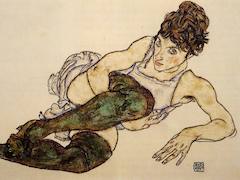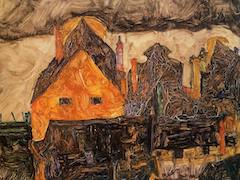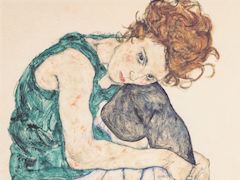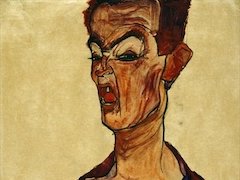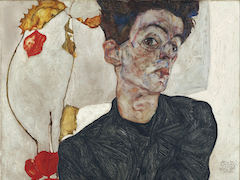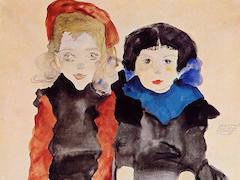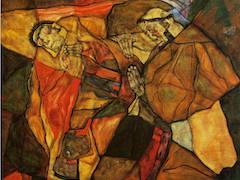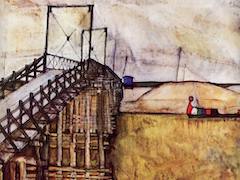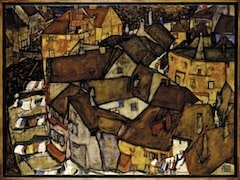Woman Undressing, 1914 by Egon Schiele
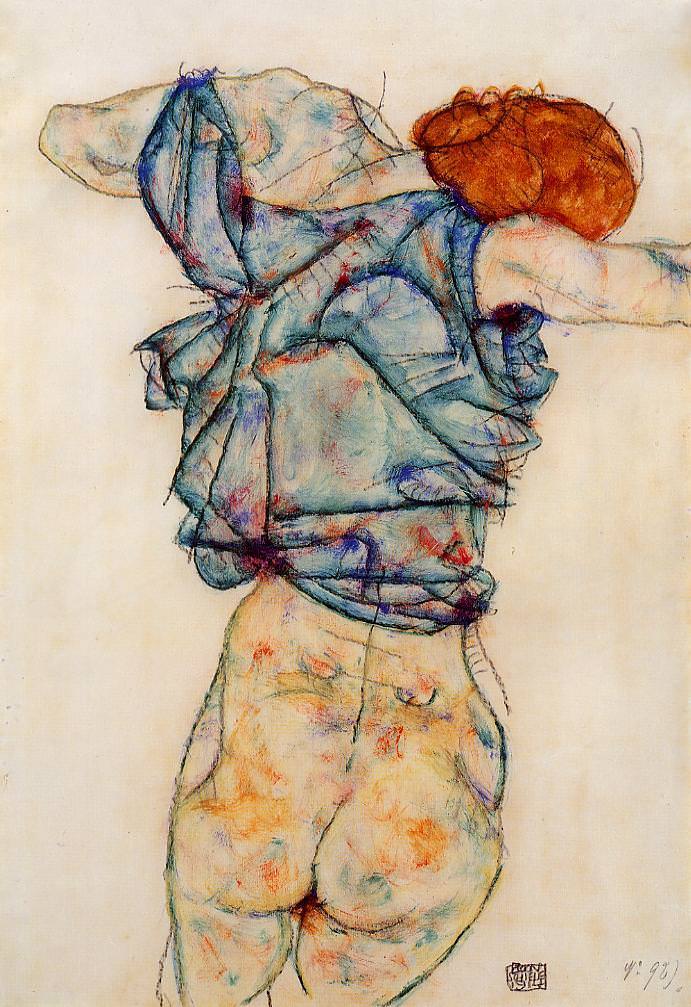
Though conditioned by an overriding thrust toward greater verisimilitude, some of Egon Schiele's experimental techniques of 1914 appear superficially radical. This is certainly true of the wild hatching that emerged around midyear. Drawings from this period recall the pseudo primitivism of some of Oskar Kokoschka's early work. However, Schiele's seemingly erratic lines were actually busy defining three-dimensional volumes.
The bizarre seams and scars that punctuate Schiele's figure drawings in 1914 may have derived from his contemporaneous experiments with drypoint etching. Since Schiele (who had little patience with printmaking and gave it up after a few months) never learned the more complex techniques for transferring shadow and tone to the plate, he had to make do with line alone. Hatching is the tryied-and-true way for embellishing an etched line and modeling richer forms. One cannot altogether know whether this approach-evident in Egon Schiele's etchings - influenced his drawings, or vice versa.

